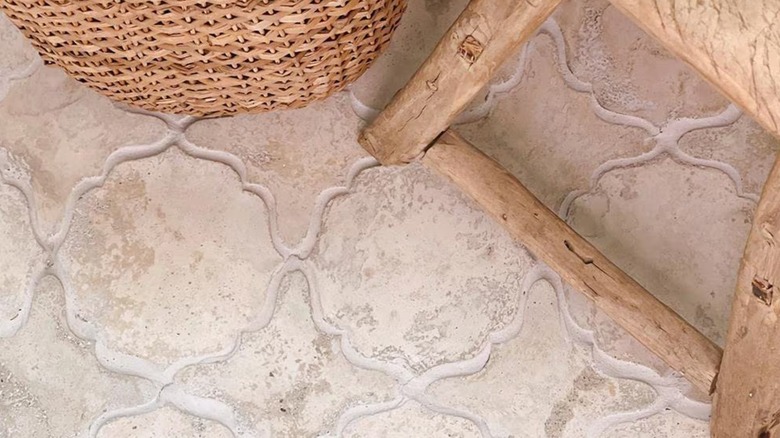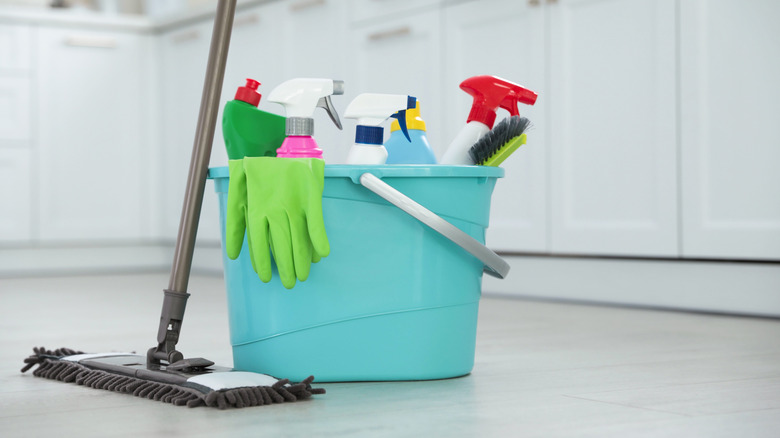How Do ARTO Tiles Compare To Some More Budget-Friendly Options?
If you're installing new tile in your home, concrete may have caught your eye. Although some may find its use outside of basements or garages unconventional, concrete flooring is right for many homes due to its durability and versatility. Among tile suppliers, ARTO stands out for its rustic colors, patterns, and complex shapes. While ARTO may be on the higher end of the scale, its unique stock can help your home stand out.
Based in Southern California, ARTO was founded in 1966 by Arto Alajian. Today, the company is run by Alajian's sons and is known for its concrete and stoneware tiles. If you're big on sustainability, ARTO is an attractive choice because its tiles are made from renewable, locally sourced materials. However, ARTO has another bonus that may catch your eye: All of its tiles are handcrafted. This allows each individual tile to have its own unique character. Plus, handcrafted tiles are often made with an attention to detail that may make them longer-lasting than their mass-produced counterparts.
One of ARTO's main draws is its tiles' color schemes, featuring earth-toned hues like browns and greens or muted oranges and reds. According to the company, most cement tiles are formed by hydraulically pressing materials, including color pigment, on top of a concrete base. However, concrete tiles are cured, and ARTO uses a liquid pigment to transfer color throughout their entire body. Finally, ARTO tiles come in a variety of non-traditional shapes, as shown by its Arabesque Collection, that allow you to have a lot of creative freedom when designing your project.
Here's what people have to say about ARTO tiles
On average, concrete tiles cost between $3 and $8 per square foot, depending on style and quality. But like most handmade tiles, ARTO's products tend to cost more. Although ARTO's pricing varies depending on the collection and size, the cheapest options begin at around $13. Most people who use ARTO tiles find the price to be worth it, though. One Yelp reviewer said, "Their material is beautiful and great quality."
A Houzz reviewer wrote, "ARTO's Arabesque series allowed me to unify the home with a single color while the many sizes, shapes and patterns helped me create individual spaces and transitions throughout." Another Houzz reviewer stated that ARTO's handmade tile "lends an authenticity and unique characteristic that is so often sacrificed in our society that focuses on generic machine made product."
However, one reviewer expressed their disappointment with the color of their outdoor tile, writing, "The color did not last through even one rainy season in California ... we are still tracking the color powder residue that is weeping away from the tile into our house leaving footprints everywhere, even now 1.5 years after install." According to the reviewer, ARTO responded that specific tile wasn't designed for outdoor use, although the reviewer claimed that it was marketed as such.
Similarly, another reviewer complained about "heavy breakage of pieces" and "color failure" even with sealant. The reviewer added, "Use only on interior foundations. They do not educate their distributors either so they sell it (certain patterns, sizes) for the wrong applications."
How to maintain your concrete floors
If you decide to invest in ARTO tiles, proper maintenance will save you potential heartache. First, ensure your floors are sealed. This protective layer is very important for your tiles' longevity. Since concrete is porous, the tiles will suck up dirt and stains without it. If you purchase glazed tiles, you may not require an additional sealant, as the glaze will behave like one. However, you should double-check with your supplier. When cleaning concrete, avoid very acidic or basic cleaners, like bleach or ammonia. Instead, the best way to clean your sealed concrete floors involves only simple products, like mild dish detergent. If you do have to tackle any stains, you can also opt for pH-neutral floor cleaners.
However, you may also decide that concrete isn't right for your project. If that's the case, you can look into alternatives to concrete flooring for your home, like brick. This is an especially great choice if you're attracted to concrete tiles due to their rustic appearance. You also still get a lot of design flexibility, as you can use a variety of patterns, like basket weave or herringbone. Generally, brick costs under $10 per square foot, so it's also affordable. Remember that, like cement, brick is super porous, so it will easily stain if it's not properly sealed and maintained.

